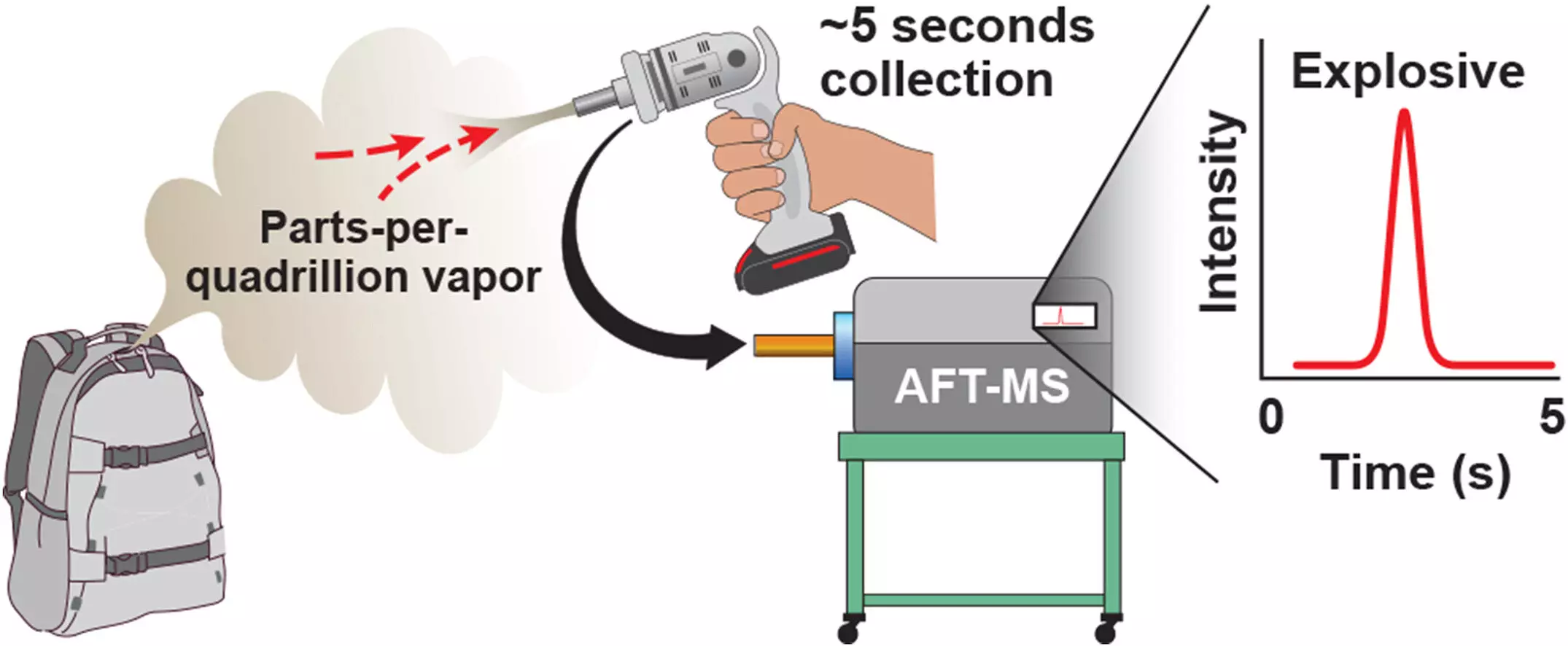Explosives have always posed a significant threat in terms of security and safety. Detecting these explosives has been a challenge, especially when dealing with low-vapor pressure substances that do not readily evaporate into the air. However, scientists have recently made a remarkable breakthrough in detecting trace amounts of explosives from several feet away, reducing the need for close contact and potential risks associated with handling suspicious materials.
The latest research, published in the journal Talanta, showcases a method that can identify explosives like nitroglycerin and RDX from distances of two to eight feet. This is a significant improvement from previous methods that only allowed detection from about half an inch away. The team behind this groundbreaking technology, led by Robert Ewing of the Department of Energy’s Pacific Northwest National Laboratory, has developed sensitive equipment capable of recognizing explosives at levels of less than 10 parts per quadrillion. This level of sensitivity is likened to identifying a single pine needle from an entire forest or plucking out a coin from a stack of pennies more than 17 million times higher than Mount Everest.
The implications of this technology are far-reaching, as it can be used not only for detecting explosives but also for identifying narcotics and other chemical threats. The technology has been licensed to BaySpec Inc., a company in Silicon Valley that specializes in spectral sensing for various applications. They plan to develop a commercial product based on this technology for the detection of explosives and narcotics, with a target release date of 2025. This development marks a significant step towards enhancing security measures and keeping people safe from potential threats.
One of the main challenges in detecting low-vapor explosives is the limited number of molecules released into the air, making it difficult to capture and analyze them. Unlike substances with higher vapor pressure, such as gasoline, these explosives require innovative techniques for detection. The team at PNNL has employed a powerful handheld air sampler developed at the University of Washington, which can draw in approximately 300 liters of air per minute. This allows them to collect enough air in just a few seconds to detect materials with low vapor pressure, such as nitroglycerin and RDX.
Central to the success of this technology is the atmospheric flow tube, a two-foot-long device where molecules are ionized before being analyzed by a mass spectrometer. This setup provides more time for the target molecules to be ionized, increasing the sensitivity of detection. By using this approach, the team has been able to achieve remarkable levels of detection accuracy, surpassing their previous achievements and receiving recognition for their groundbreaking work.
The potential applications of standoff detection technology are vast, with the capability to detect a wide range of explosives, drugs, and chemical threats. The team at PNNL believes that this technology can significantly enhance security measures and contribute to keeping people safe from potential dangers. As the technology continues to evolve, we can expect further advancements in detecting and combating threats to security and safety.
The breakthrough in standoff detection of explosives represents a significant milestone in the field of security and defense. This innovative technology has the potential to revolutionize the way we detect and respond to potential threats, enhancing safety measures and protecting individuals from harm. With ongoing advancements and refinements in detection technology, we can look forward to a safer and more secure future.


Leave a Reply